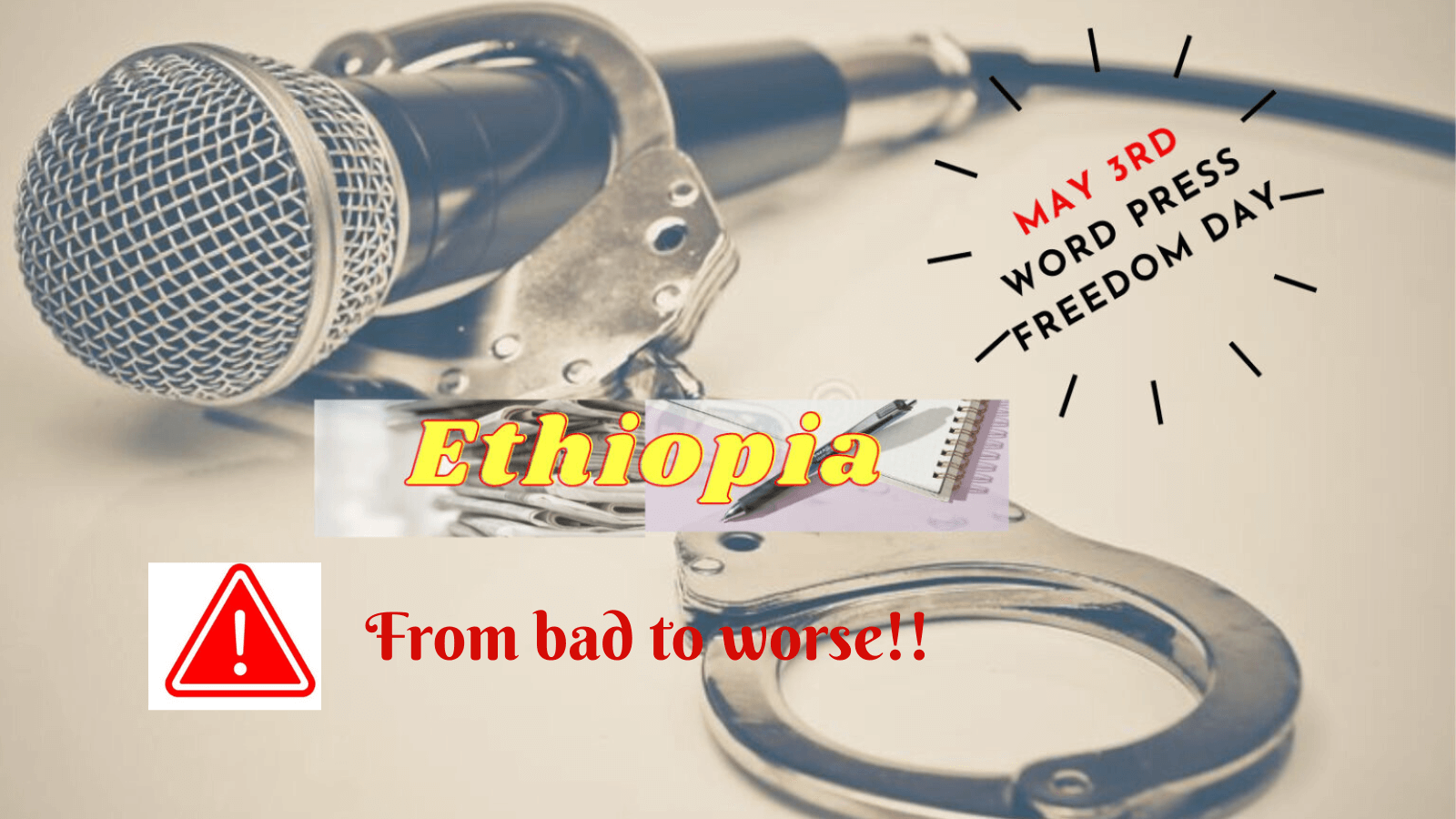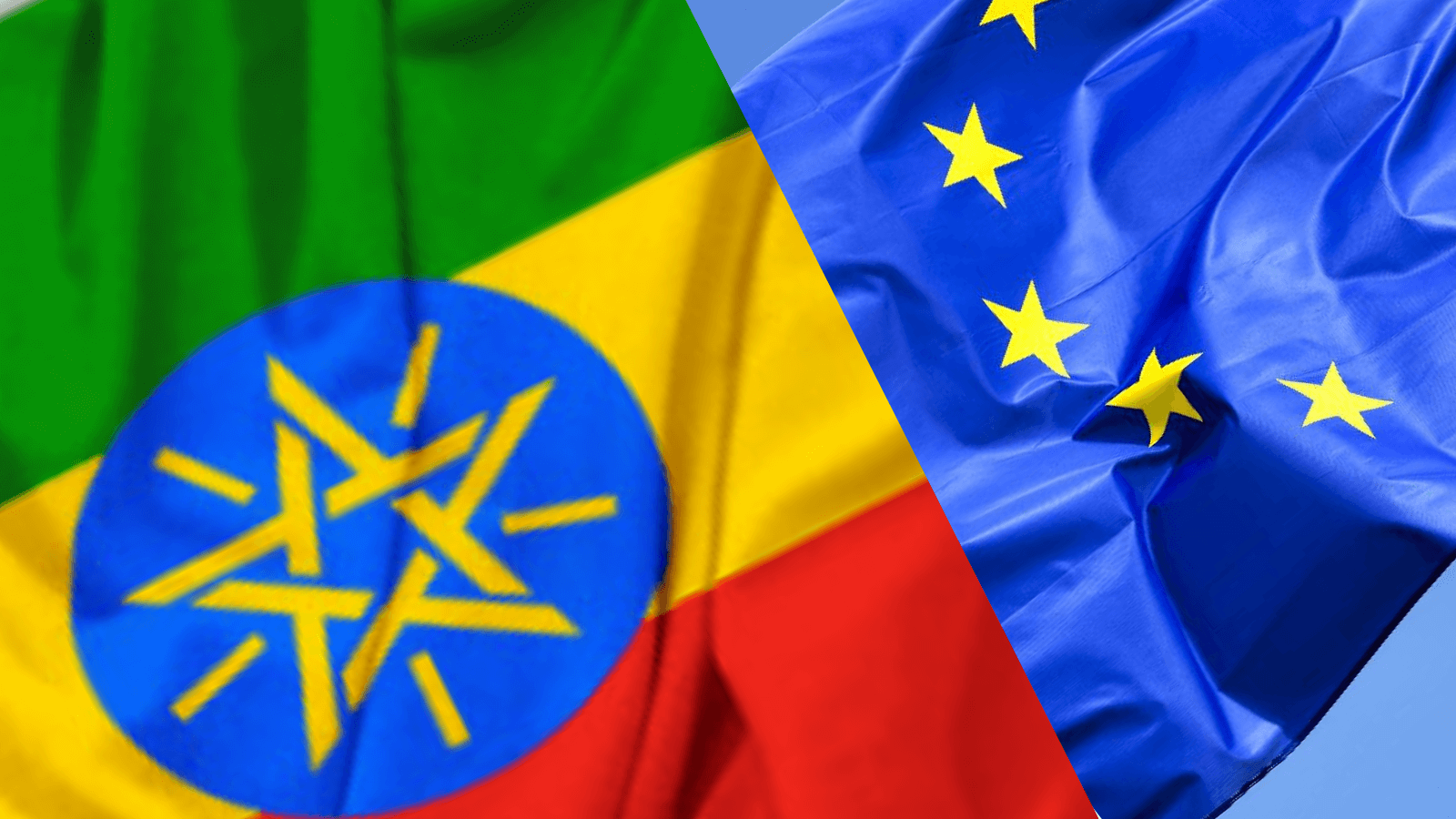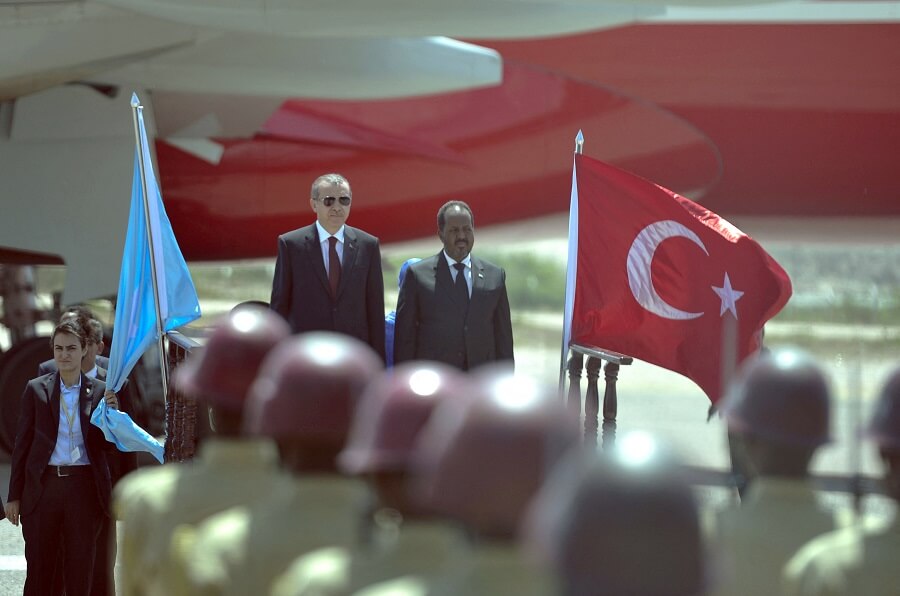Opinion: ANDM and OPDO turned against their master but both follow diverging paths. Here is how
“From the forgoing, despite some similarity, the divergence between OPDO’s and ANDM’s paths is not insignificant. The obvious question when one observes such a divergence is “why?”. Why is ANDM—the most senior party within the front, next to TPLF, with modest contribution to the overthrow of Mengistu regime and historical tie with the legendary ERPP and the Ethiopian student movement—less rebellious and more submissive than OPDO?”
Biniyam N. Menberework, For Addis Standard
Addis Abeba, April 10/2018 – The post-Mengistu Ethiopia political order is essentially the construct of the Ethiopian Peoples’ Revolutionary Democratic Front (EPRDF). EPRDF, founded in 1989, was originally a coalition of two insurgencies; namely, TPLF (est.1975) and the Ethiopian People’s Democratic Movement (currently, ANDM (est.1982)), and later joined by OPDO (est.1990) and SEPDM (est.1992).
However, the front has never been a coalition of equals. TPLF, which was instrumental in the formation of the coalition and had considerable control over the birth and the evolution of the other member parties, has been, as Dr. Merera Gudina.[i] succinctly put it, ‘the commanding real core of Ethiopia’s ruling party’. Capitalizing on its dominance over the military, intelligence and security apparatus, TPLF, employing all means necessary, has also played a key role in making sure the front and allied parties stay in power.
Yet what is striking is that TPLF’s constituency accounts for not more than 6 % of the total population of the country while that of OPDO and ANDM represent some 60 %. Strangely enough, despite such flawed structure that artificially “equalizes” the unequal constituent parties and the asymmetric power relation within it, the coalition has so far managed to function like a well-oiled machine, with the notable exception of the 2001 split within TPLF.
Cracks, however, began to appear following the death of the front’s founding and influential Chairperson, Meles Zenawi, who was at the helm for some 23 years, in 2012. The then Deputy Chairperson of the front, Hailemariam Dessalegn, was put in charge of managing both the party and/or the federal government as most of the prominent and experienced leaders of the organization were already sidelined because of what the front called the “internal generational renovation”, which was aimed at replacing pioneers in the party with new faces.
The new party boss from the weakest party within the coalition, i.e. SEPDM, found himself in an uncomfortable position and too-big-to-fill shoes of his immediate predecessor. He was no Meles, and unlike Meles, who had control over the TPLF-dominated military and intelligence, loyalty of the constituting party leaders, and mastery of intra-party power politics and palace intrigue to run it all as one-man band, Hailemariam wielded virtually no significant power.
As a result, some elements within the member parties, perhaps for the first time since the inception of the front, realized that it was an opportune time to upset the intra-front balance of power. Fast forward to present, as widespread protests engulfed the country from almost every corner, the infighting and power struggle within the front seems to be an open secret. The opaque EPRDF was as a result obliged to publicly acknowledge the existence of “mistrust” among constituent parties.
Not surprisingly, both ANDM and OPDO appear to be, to a greater or lesser degree, frustrated with decades-long dominance of TPLF. The boldness and outspokenness particularly of the new generation leadership of OPDO, otherwise popularly known as ‘Team Lemma’, in this regard is quite unprecedented. The Team voices the grievances of Oromo people and embraces major demands of the Oromo protests. In effect, the once-subdued and arguably most despised organization in Oromia managed to garner significant public support across the region and beyond, the cautious support of Oromo elites inside Ethiopia and abroad as well. OPDO, casting itself as a reformist element within the front, uses this political capital to push some popular demands and claim a meaningful role in the federal government commensurate with its constituency. The latest attempt of OPDO parliamentarians to stand in the way of the controversial and unwarranted state of emergency bill was unheard of in Ethiopia’s opposition-free rubberstamp parliament. It also publicly showcased the intensity of the rebellion. More strikingly, the eventual rise of the newly-elected OPDO’s boss, Abiy Ahmed, to power in the face of TPLF’s undisguised resistance arguably represents a sea change in EPRDF.
ANDM, on the other hand, continues, at least as much as noticeable to external observers, to function quietly, maintaining a low-profile. While some claimed the party actively worked in tandem with OPDO to elect the new chairperson of EPRDF, it does not seem to be too uncomfortable with the status quo; but, too sensitive to TPLF. One cannot but consider its total disinclination to embrace the major demand of protests in Amhara region – the identity question of the people of Wolkayit – as an attempt not to raise the ire of TPLF. Not uncommon though to single out one or two high-level leaders as reformers, the party seems to be in an unusual stability, bordering on stagnation. The latest statement of the party, which signaled some positive changes, cannot be more than a tempest in a teapot if one compares it to that of OPDO.
From the forgoing, despite some similarity, the divergence between OPDO’s and ANDM’s paths is not insignificant. The obvious question when one observes such a divergence is “why?”. Why is ANDM—the most senior party within the front, next to TPLF, with modest contribution to the overthrow of Mengistu regime and historical tie with the legendary ERPP and the Ethiopian student movement—less rebellious and more submissive than OPDO? Given the ruling front’s characteristic culture of secrecy and opacity, perhaps, it could be too daunting a task to come up with a definitive answer for such question. Keeping in mind this complexity and mindful of the underlying caveats, here an attempt is made to highlight some of the factors which could possibly explain the diverging political developments within the two parties.
Programmatic orientation and organizational forms
ANDM, formerly a multi-ethnic Ethiopian People’s Democratic Movement, was formed by a tiny splinter group of Ethiopian People’s Revolutionary Party under the tutelage of their mother party’s foe i.e. TPLF. Small wonder the party went a long way towards fully embracing the TPLF major political program. Somewhat deviating from their mother party’s position, the founders of the new party acknowledged the Eritrean problem as colonial question and accepted the pre-eminence of national oppression over class oppression in Ethiopia.
Later renamed as ANDM, the party became an ethnic-based organization of the Amhara people. It considered the Amhara ruling class to be a national oppressor for about a century and espoused to ethnic-based federal arrangement, which promises the unconditional rights of ethnic groups to self-determination including secession, among others. Also the party considered the “chauvinism” of the Amhara elite a menace to EPRDF’s Ethiopia. In line with the tradition within the EPRDF, ANDM, overtly or covertly, showed contempt to Ethiopian nationalism dubbing it as a camouflage of “Amhara nationalism”.
Seen in this light, the logical role of the party seemed to be that of disciplining the Amhara people instead of representing and advancing its interests. Most of the first generation leaders of ANDM -who were not born in and hadn’t lived with the community and hence alien to the psychological makeup of the people- have been unimaginative enough to make a mockery of the aspirations of their constituency. Worse still, some of its leaders tried to justify, encourage in some cases, the persecution of the Amharic speaking people in some parts of the country during the transition period.
Joining the party, therefore, takes, inter alia, recognizing, without any hesitation or reservations, the supposed Amhara domination over other ethnic groups, and embracing the current federalism and the politics of ethnicity. One has to also stomach the implicit humiliation for the supposed historical misdeeds of the “Amhara ruling class”. This could in many ways be considered a recipe for a possible political failure in the region as it tends to guilt and sideline the whole Amhara as people. Given that the people of Amhara region mostly despise ethnicized politics and have been clearly in favor of pan-Ethiopianist movements and meta-ethnic groupings[ii], small wonder if the party’s approach significantly cripple the potential of the party to recruit competent and enthusiastic cadres. No accident if the crème de la crème of the Amhara elite has been nowhere to be found in the structure of the party. Sarah Vaughan, emphasizing the negative impact of the aforementioned factors, wrote: “when the Amhara Development Association was set up, it proved difficult to recruit members, officers, and supporters. Attracting qualified individuals into the regional civil service proved even more problematic.”
In such a case, when the ANDM recruits party members, there is a strong possibility that most, if not all, available ones can be those who are determined to get as much personal gains as possible out of their political allegiance. Also it is not unlikely that folks who are desperately looking for shortcut to escape egregious working condition in remote and rural Amhara jump in feet first. This group of people tend to be unprincipled and a good client if and when one wants to patronize them.
Despite the image of OPDO as a satellite of TPLF and a symbol of betrayal, it was essentially created and meant to be a competitor and replacement for the Oromo Liberation Front (OLF) – a political organization near and dear to many Oromos. More importantly, mobilization along ethnic lines and the current federalism, which is associated with the guarantee of language and cultural rights, resonates with the vast majority of Oromo elites. It has to be also noted that the Post-1991 political order was uniquely conducive to the revival of Oromo culture and the official use of Afaan Oromo for educational and administrative purpose. EPRDF’s official programmatic orientation and ethnic-based organization, thus, seemed to have no or little impact on the capacity of OPDO to attract new competent and enthusiastic members. It is OPDO’s role as a stooge of TPLF in committing human right abuses, incarcerating thousands of Oromos and facilitating the plight of the region, that might impede party’s recruitment effort, instead. As this factor is equally important in the case of ANDM as well, its relevance to explain the difference is minimal.
Purges and defections
Purges and defections are relevant factor for it might allow an infusion of new blood into the organizations. Though they might generally fracture the organization of a party, they concomitantly allow the inclusion of new cadres and provide opportunity for political upward mobility. They might also disrupt the formation and catalyze the shake-up of a draconian organizational culture and informal networks within the party. It is also logical to assume that defections and purges in a political party matter more when competent and experienced political operatives are already in short supply.
Viewed from this perspective, ANDM’s and OPDO’s pasts tell us a tremendously different story. Defections and purges have been more or less non-existent within ANDM. High-profile defection has been quite uncommon. Also, massive removal of party leaders never was the case in the post-1991 ANDM, save the arrest of Tamrat Layine, the then Chairperson of ANDM and Deputy Prime minister. Interestingly, the 2001 TPLF split, which resulted in substantial damage on all the member parties of the front (TPLF included), did not significantly affect ANDM. Throwing its full support to the winning faction led by the late Meles Zenawi, the party remained intact and even came out stronger than ever.
Conversely, OPDO has been very prone to purges and defections. High-profile party leaders including ministers, the president of the Oromia region and the head of state of the country left or were forced out of the party. Most of these defections were essentially the rejection of TPLF’s meddling in the party’s affair. A frequent change of leadership has also been quite common. During the time that ANDM has been under the chairpersonship of Demeke Mekonen, at least four persons presided over OPDO. A significant change has been repeatedly made in the high-level party structures as well. As OPDO from the very beginning did not have enough cadres and political operatives to fill in the political positions in the largest region in Ethiopia, the implication of purges and defections could often be relatively more profound. Following the purge of OPDO by the winning faction of TPLF, the party had no choice but to be taken over by the Army General—Abadulla Gemeda—who just retired from active duty. The haphazard appointment of a low-profile technocrat by the name of Junedi Saddo as a president of Oromia some years ago might also be regarded as one more instance that exposes the limitation of the party in this regard.
In effect, OPDO, unlike ANDM, was constantly forced to changes and wasn’t able to develop a stable ruling elite that could serve as a reliable satellite of TPLF. It thus makes some degree of sense to argue that OPDO has been far more susceptible to changes than the relatively well staffed and stable ANDM.
On a related note, the impact of the massive recruitment drive, particularly the post-2005 election recruitment of college students and graduates, on the two parties seems to be somewhat different. In Oromia, not few college graduates of those years – who are willing to think outside the box and tend to be extremely disgusted with the portrayal of the party as a satellite of TPLF- are currently serving at regional level as head or deputy head of regional bureaus. Many of them are also Woreda cabinet members, mayors and zonal department heads. The regional communication chief, Addisu Arega, and the mayor of Shashemane, Tayiba Hasen, are among the most notable ones. The impact of the same move on ANDM is quite negligible. Most of college graduates directly assigned as woreda level manager left or were removed from the positions in few years. Only a mere handful of them survived and made it to zonal and regional leadership only to remain invisible.
The incidence and intensity of protests
The last, by no means the least, factor that could help us understand the diverging paths of the two political parties is the incidence and intensity of protests in the Oromia and Amhara regions. Ethiopia has been experiencing widespread and virtually uninterrupted popular uprisings for the last three years. This round of anti-government protests is the latest, and perhaps the most notable one, among waves of political unrest and protests in the past 27 years. Protests have not, however, been evenly distributed across the country. They also vary in terms of their incidence and intensity, among others.
Though the anti-government protests in Oromia and Amhara regions generally exhibited high level of intensity, the protests in Oromia, covering most part of the region, have been remarkably well-coordinated and persistent. Furthermore, OPDO, as alluded to earlier, has been far more susceptible to change and too fragile to withstand a protest of such magnitude. Unlike the protests in Amhara region, Oromo protests, thus, seem to be successful in gaining a significant support from local cadres and putting extreme pressure on the high-level leadership of OPDO. Providing a fallback for the progressive element within OPDO, the protest also emboldened the party to embrace some of the demands of the protests and take a more radical stance vis-à-vis the dominance of TPLF. In this connection, Tsegaye R. rightly noted that the change in OPDO is “the overall effect” of “the resurgent Oromo resistance that was rekindled in 2014 and persisted to date”.
By way of conclusion
The above-discussed factors are not exhaustive enough to include all relevant factors,[iii] nor do the arguments conclusive to provide a definitive answer. The attempt, as is made clear from the outset, is to touch on the relatively important ones, thereby shedding some light on the diverging paths of ANDM and OPDO. As one can infer from the forgoing discussion, albeit both parties do, to a degree, want to see the reconfiguration of balance of power within EPRDF, OPDO has recently been more straightforward and taken bold moves. The infusion of fresh blood into the organization and their eventual relative prominence in highest echelon of the party along with the continued high intensity and widespread protests in Oromia have paved the way for the rise of Team Lemma that set OPDO on different course.
The relatively stable ANDM, assimilating new comers into the entrenched organizational culture and weathering the storm of political protests, seems to function quietly, maintaining effective control over party structure and regional government bureaucracy. The party’s popular support is not growing, its image as a satellite of TPLF has not been changed. Every modest step taken by ANDM in a bid to claim its rightful place in the front seems to be dwarfed and overshadowed by another bolder steps taken by OPDO. What is not clear, however, is whether ANDM is waging a quiet rebellion or struggling to recover from political Stockholm syndrome. AS
ED’s Note: Biniyam N. Menberework can be reached at yambinimw@gmail.com. He tweets @yemenbison
[i] Merera, Gudina. “Ethiopia: competing Ethnic Nationalism and the Quest for Democracy, 1960-2000, Addis Ababa.” (2003).
[ii] It is worth noting that there has been a heated debate among mostly Diaspora-based Amhara youth in this regard over the past few years. The proponents of Amhara-based political movement believe that the organization of Amhara people along ethnic line is a necessary condition to defend itself from what they call the existential threat posed by the TPLF-dominated regime.
[iii] The alleged domination of ANDM’s central committee by non ethnic Amhara, which is often cited as an important factor by many commentators, has not been factored in as the author of this piece could not find detailed information.









